Order
of the Dragon of Annam - Annam/Vietnam (1886-1946) (2002-)
Both
the French Government as well as the Court at Hue awarded this Order in
five classes (Grand Cross, Grand Officer, Commander, Officer and Knight)
for civil and military merit. The design is a single sided eight-pointed
star with faceted rays; the center is a blue oval medallion with Chinese
calligraphy in gold (Dong-Khanh Hoang-De, or Emperor Dong-Khanh) encircled
by a red riband. The planchet is suspended from a European style crown
held by a green dragon facing left. The reverse is hollow.
A series
of ribbons have been associated with this medal. After 1900, awards by
the Emperor of Annam had a yellow 7mm - red 22mm - yellow 7mm ribbon.
Awards by the President of France had a yellow 7mm - light green 22mm
- yellow 7mm ribbon. The star of the Knight-class, pictured here in both
ribbon varieties, ranges in shape and size from 45mm to 53mm, depending
on manufacturer. Both French and Vietnamese manufacturers produced this
Order. Following European tradition, the Emperor of Annam, alone, could
wear the Grand Cross in tandem with the Knights badge.
In 2002, Prince Regent Nguyen Phuc Buu Chanh restored the Order, which had remained the dynastic property of the Emperor of Vietnam. See the separate page dedicated entirely to the history of this Order at: www.emering.com/medals/index.html
Khanh
This
ancient and venerable Annamese award, usually produced in gold (Kim Khanh)
takes its name and shape from the ceremonial metal or stone gong. In its
earliest days, it was a distinction sparingly awarded to high mandarins
only. Many were custom made with inscriptions specific to recipient of
the award. Those awarded to the Emperor were often made from precious
stone such as jade. The Annamese Royal Court awarded this Order to many
French Colonial government officials and military officers. It was presented
in three classes differing in size and inscription. The Order was worn
centered on the chest, usually suspended from a thin red neck cord. The
Republic of Vietnam resurrected this award in 1957.
Boi
Adopted
in 1889, the Boi, usually produced in gold (Kim Boi) was the equivalent
of the Khanh for presentation to notable females. Although it was intended
for award in three classes, in fact, the oval shaped Boi was only awarded
in a single class.
Order
of Agricultural Merit
This
medal was awarded by the Annamese court for meritorious services rendered
in the promotion and development of agricultural matters. It is structured
in three classes (Commander, Officer and Knight). The square design is
bordered by a blue Greek key design. The center consists of a stylized
design of yellow rice grains and green leaves with a red sun set in the
background. The reverse design is similar, but bears four Chinese characters,
which read BESTOWED BY THE EMPEROR above and BRILLIANT AGRICULTURE below.


Order of the Dragon of Annam Knight Class with French issued ribbon and Order of Annam Officer Class with Annamese issued ribbon
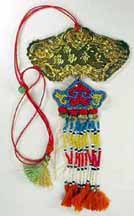
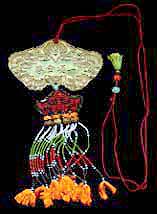
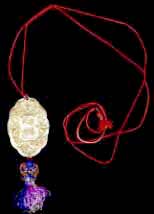
Kim Khanh & Kim Boi
Bai
Although
more of an insignia of rank, I have included examples of the Bai because
they became elevated to a "badge of prestige." The Bai shown here are
made of ivory and take their shape from the tablets borne by the Chinese
mandarins. Ivory Bai were worn for regular daily usage within the palace
grounds at Hue.
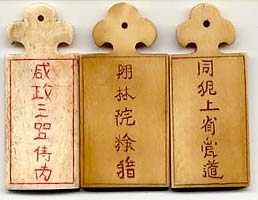
Mandarin of 3rd Rank issued by the Court Chamberlin, Staff Member of the Hanlin Academy and Court Chamberlin, High Mandarin or Imperial Officer of The Palace Guards (left to right)
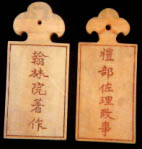
Court Historian (left) and Assistant Chief of Protocol (right)
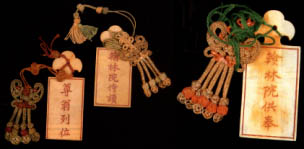
Court Elder of the Royal Household (left), President of the Royal Academy of Scholars (center) and Management Representative of the Academy of Scholars (left)
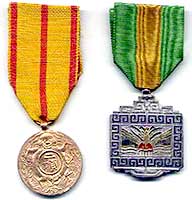
Kim Tien (left)
and Order of Agricultural Merit (right)
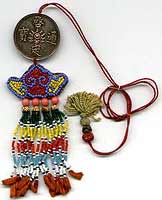
Ngan Tien 

Ngan Tien and Dong Tien
(European style presentation)
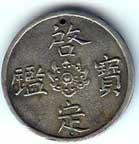
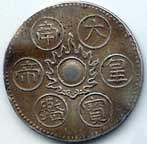
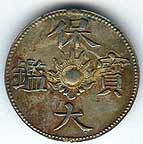
Examples of Tien issued by Khai Dinh and Bao Dai (center and left)